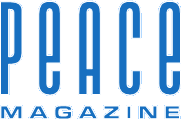The Canada Revenue Agency (CRA) recognizes organizations as charities based on three broad categories: relief of poverty, advancement of education, and advancement of religion. It does not consider magazines eligible to be charities because they do not ‘educate.’ CRA apparently assumes that you normally just buy them and casually read a few articles while killing time, whereas real education requires you to follow a planned program of study. Hence even informative magazines, not being used in structured trainings, don’t normally qualify as charities for tax purposes.
On the other hand, two other Canadian institutions, SSHRC and NSERC, which each spend over $1 billion per year funding research and training, do consider both scholarly journals and magazines as education — at least those that support ‘knowledge mobilization.’
What’s knowledge mobilization? Well, new knowledge is constantly produced by researchers in academia, industry, and government — but the new discoveries may be published in obscure sites where only a few people ever learn about them. To be useful, they must become a lively topic of discourse for experts and stakeholders. Some magazines do spread existing research results widely and show their relevance to public policy. That’s knowledge mobilization, clearly a vital contribution to public education, whether or not CRA agrees. That’s what Peace Magazine has always done well, and now it’s becoming our core objective.
OUR NEW EDITORIAL POLICY
Forty years ago, the Canadian Disarmament Information Service (CANDIS) created Peace Magazine as a forum about the nuclear arms race.
Now CANDIS is amalgamating with Project Save the World, a not-for-profit corporation to prevent six life-threatening global risks — war and weapons; global warming; famine; pandemics; radioactive contamination; and cyber risks — plus three policy sectors: the economy; governance and human rights; and civil society.
In merging, CANDIS will cease to exist as a distinct entity, but the combined organization, as Project Save the World, will still publish Peace Magazine.
The official purpose of Project Save the World will be:
“The advancement of education by providing an open forum for qualified experts to discuss their research with other experts and to make those results available to the public.”
We run four platforms free of charge to make factual results available to the public: Peace Magazine; our website, https://tosavetheworld.ca; our YouTube channel, https://youtube.com/c/tosavetheworld; and for audio podcasts, Libsyn. We provide spaces for the audience to discuss what they have read, watched, or heard.
Peace Magazine will change a bit by covering more life-threatening risks to humanity. It will publish relevant discussions among qualified experts about research on serious global issues and some other articles that are substantially informed by research.
Not all articles must be written by experts. We also welcome proposals and submissions by writers who may not be researchers themselves but who can tell accurate stories about researchers and their ongoing debates with other experts. We will still offer book reviews, letters, a news page, and a current controversies column, which may even be polemical, but which should be anchored in discussions about evidence, not merely hortatory rhetoric. We hope you’ll enjoy “mobilizing your knowledge.”
DISTRIBUTING THE MAGAZINE
Over its forty-years, Peace Magazine’s paid subscribers declined and, when we became digital-only, dropped to a few dozen. However, we now email a free digital edition to thousands of civil society groups. We will continue doing so, not exactly as a magazine, but as PSTW’s free newsletter for NGOS.
Peace now fulfills Project Save the World’s purpose: to make the results of the experts discussions available to the public. If you want the magazine individually, you can subscribe through Press Reader. We are grateful to our dear handful of loyal paying subscribers. Let’s celebrate together and prepare for our next forty years!



